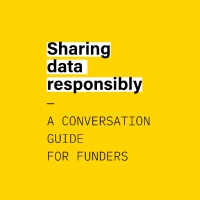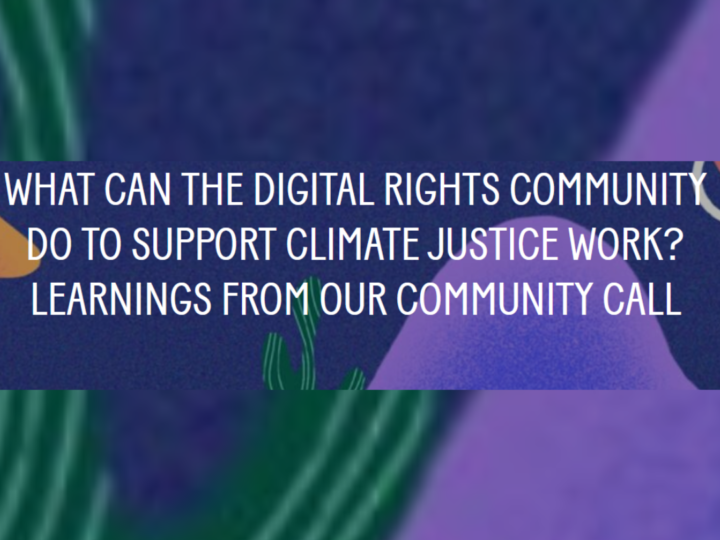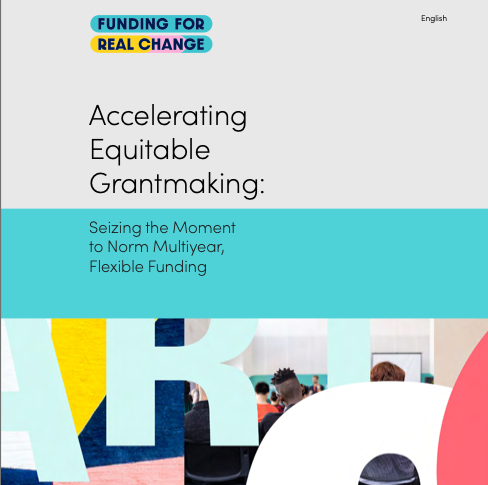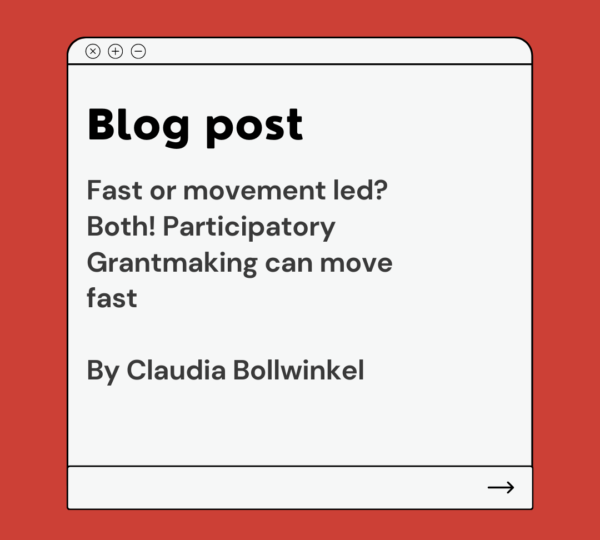 This post was co-written by Julie Broome and Tom Walker, and is cross-posted from Glasspockets (original can be found here).
This post was co-written by Julie Broome and Tom Walker, and is cross-posted from Glasspockets (original can be found here).
Julie Broome is the Director of Ariadne, a network of European donors that support social change and human rights. Tom Walker is the Research Manager at The Engine Room, an international organisation that helps activists and organisations use data and technology effectively and responsibly.
Foundations find themselves in a challenging situation when it comes to making decisions about how much data to share about their grantmaking. On the one hand, in recognition of the public benefit function of philanthropy, there is a demand for greater transparency on the part of funders and a push to be open about how much they are giving and who they are giving it to. These demands sometimes come from states, increasingly from philanthropy professionals themselves, and also from critics who believe that philanthropy has been too opaque for too long and raise questions about fairness and access.
At the same time, donors who work in human rights and on politically charged issues, are increasingly becoming aware of the risks to grantees if sensitive information ends up in the public domain. As a result, some funders have moved towards sharing little to no information. However, this can have negative consequences in terms of our collective ability to map different fields, making it harder for us all develop a sense of the funding landscape in different areas. It can also serve to keep certain groups “underground,” when in reality they might benefit from the credibility that foundation funding can bestow.
As the European partners in the Advancing Human Rights project, led by the Human Rights Funders Network and Foundation Center, Ariadne collects grantmaking data from our members that feeds into this larger effort to understand where human rights funding is going and how it is shifting over time. Unlike the United States, in which the IRS 990-PF form eventually provides transparency about grantee transactions, there is no equivalent data source in Europe. Yet, many donors find grant activity information useful in finding peer funders and identifying potential gaps in the funding landscape where their own funds could make a difference. We frequently receive requests from donors who want to use these data sets to drill down into specific areas of interest, and map out different funding fields. But these types of sources of data will become less valuable over time if donors move away from voluntarily sharing information about their grantmaking.
Nonetheless, the risks to grantees if donors share information irresponsibly are very real, especially at a time when civil society is increasingly under threat from both state and non-state actors. It was in the interest of trying to balance these two aims – maintaining sufficient data to be able to analyse trends in philanthropy while protecting grantees – that led Ariadne to partner with The Engine Room to create a guide to help funders navigate these tricky questions.
After looking at why and how funders share data and the challenges of doing so responsibly, The Engine Room interviewed 8 people and surveyed 32 others working in foundations that fund human rights organisations, asking how they shared data about their grants and highlighting any risks they might see.
Funders told us that they felt treating data responsibly was important, but that implementing it in their day-to-day work was often difficult. It involved balancing competing priorities: between transparency and data protection legislation; between protecting grantees’ data and reporting requirements; and between protecting grantees from unwanted attention, and publicising stories to highlight the benefits of the grantee’s work.
The funders we heard from said they found it particularly difficult to predict how risks might change over time, and how to manage data that had already been shared and published. The most common concerns were:
- ensuring that data that had already been published remained up to date;
- de-identifying data before it was published
- Working with third parties to be responsible when sharing data about grantees, such as with donors who fund through intermediaries and may request information about the intermediaries’ grantees.
Although the funders we interviewed differed in their mission, size, geographical spread and focus area, they all stressed the importance of respecting the autonomy of their grantees. Practically, this meant that additional security or privacy measures were often introduced only when the grantee raised a concern. The people we spoke with were often aware that this reactive approach puts the burden of assessing data-related risks onto grantees, and suggested that they most needed support when it came to talking with grantees and other funders in an open, informed way about the opportunities and risks associated with sharing grantee data.
These conversations can be difficult ones to have. So, we tried a new approach: a guide to help funders have better conversations about responsible data.
It’s aimed at funders or grantmakers who want to treat their grantees’ data responsibly, but don’t always know how. It lists common questions that grantees and funders might ask, combined with advice and resources to help answer them, and tips for structuring a proactive conversation with grantees.
“There are no shortcuts to handling data responsibly, but we believe this guide can facilitate a better process.”
There are no shortcuts to handling data responsibly, but we believe this guide can facilitate a better process. It offers prompts that are designed to help you talk more openly with grantees or other funders about data-related risks and ways of dealing with them. The guide is organised around three elements of the grantmaking life-cycle: data collection, data storage, and data sharing.
Because contexts and grantmaking systems vary dramatically and change constantly, a one-size-fits-all solution is impossible. Instead, we decided to offer guidance on processes and questions that many funders share – from deciding whether to publish a case study to having conversations about security with grantees. For example, one tip that would benefit many grantmakers is to ensure that grant agreements include specifics about how the funder will use any data collected as a result of the grant, based on a discussion that helps the grantee to understand how their data will be managed and make decisions accordingly.
This guide aims to give practical advice that helps funders strengthen their relationships with grantees – thereby leading to more effective grantmaking. Download the guide, and let us know what you think!





